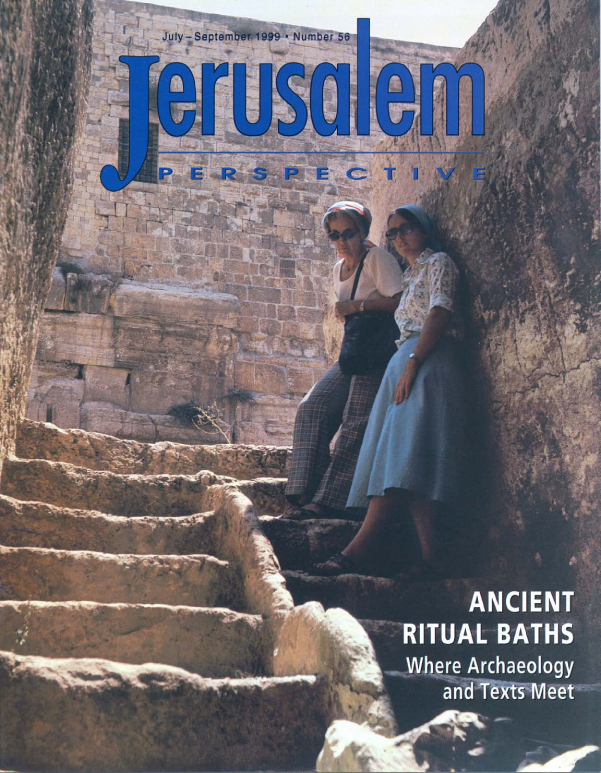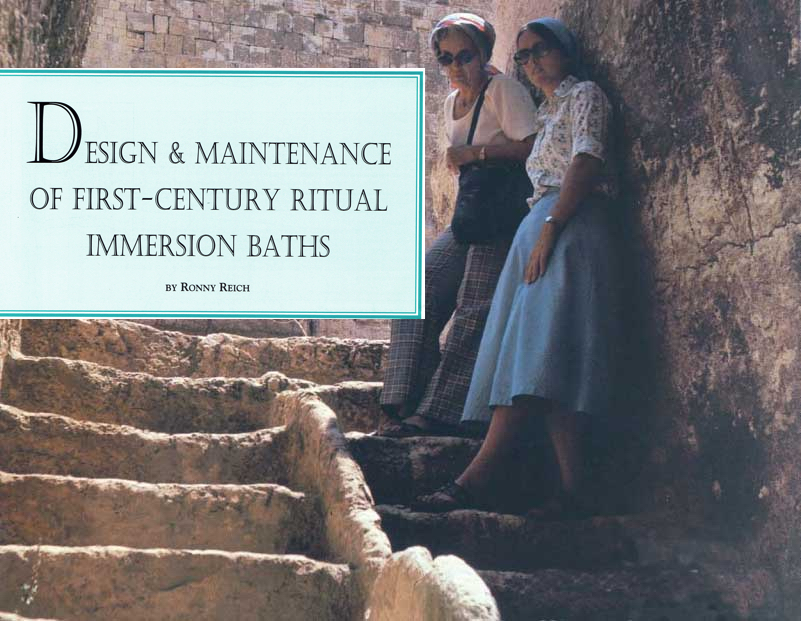How to cite this article: Ronny Reich, “Design and Maintenance of First-century Ritual Immersion Baths,” Jerusalem Perspective 56 (1999): 14-19 [https://www.jerusalemperspective.com/1786/].
What we know about ritual immersion in the late Second Temple period derives mainly from archaeological digs, the Dead Sea Scrolls and rabbinic literature. The archaeological remains of mikvaot (ritual immersion pools; singular: mikveh) and the Dead Sea Scrolls date precisely from this period; whereas, the data coming from rabbinic literature, primarily from the Mishnah and Sifra, have been preserved in texts compiled and edited 150 years after the destruction of the Second Temple. Despite the gap in time between the close of the Second Temple period in 70 C.E. and the completion of the Mishnah and Sifra at approximately 250 C.E., these early rabbinic texts contain information that dovetails remarkably with the archaeological record, and therefore, is relevant for studying ritual immersion in the late Second Temple period.
In the tractate Mikvaot, one of the tractates of the Mishnah, and in Parashah Metsora and Parashah Shemini, two sections of Sifra, the rabbis recorded highlights of their discussions resolving various problems concerning ritual immersion. From their discussions we learn five requirements for a ritually proper mikveh:
Premium Members and Friends of JP must be signed in to view this content.
If you are not a Premium Member or Friend, please consider registering. Prices start at $5/month if paid annually, with other options for monthly and quarterly and more: Sign Up For Premium

- [1] In reality, however, nearly every stepped water installation that archaeologists excavated exceeded these minimum dimensions. I suspect, therefore, that these stepped installations functioned as mikvaot. ↩
- [2] At Qumran archaeologists found numerous water installations, both with and without steps. B. G. Wood has demonstrated that the stepless installations contained sufficient water to support a population of 200 people; therefore, he concluded that the stepped installations were immersion-related (“To Dip or to Sprinkle? The Qumran Cisterns in Perspective,” Bulletin of the American Schools of Oriental Research 256 [1984]: 45-60). At least ten stepped chambers were found. Six of them were similar in craftsmanship and architectural details to mikvaot excavated in other places. Water for the Qumran community came from winter rains that washed down the Qumran Canyon and were diverted into the settlement through an aqueduct. ↩



